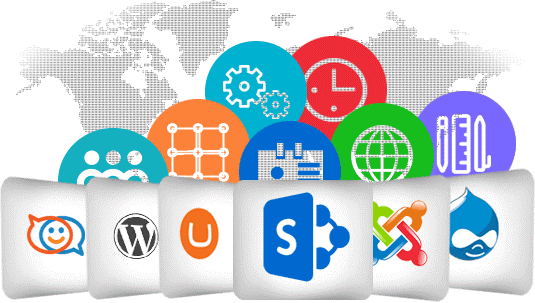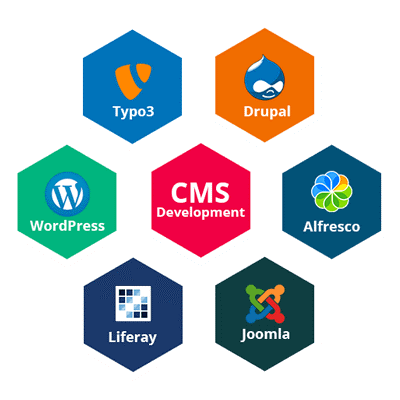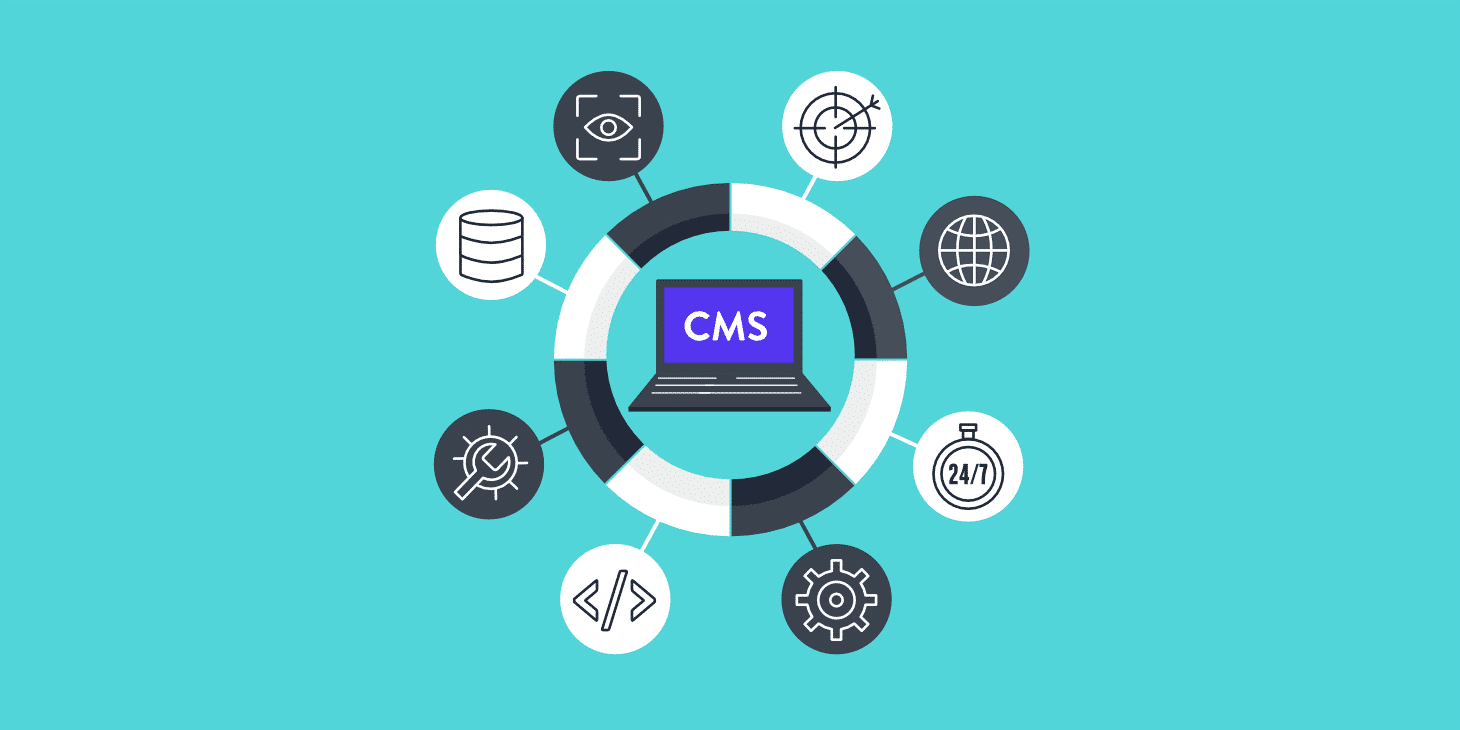Familiarity with CMS types
All types of CMS are necessary and necessary for websites and intranets to be successful. Unfortunately, many companies and organizations have not yet acquired enough familiarity with this system. Different CMS or content management systems are used to manage website content. In general, CMS consists of two elements: content management application and content delivery application. This system allows for creating content, making changes, and removing a particular part of the content in the website design without needing expertise and technical facilities in the web field.
Types of CMS
Using CMS types to create and design a simple website, you will not need to know programming languages or even HTML. The content management system or CMS creates, manages, and optimizes the website. This system continuously seeks to make a site attractive and better for its users. There is a lot of thinking and philosophy in each part of this system.
In general, it can be said that this system is free software that allows users to participate in the production and editing of digital content shared on the pages and posts of the website. This system also helps you write digital content and upload and edit it. Using this system, you can add a title and image to the desired content and perform SEO.
The types of CMS are evolving more and more every day in such a way that they have now turned from a digital content launch platform to a complete system. Ordinary people who do not specialize in CMS believe that this system allows you to set up a site. Also, they think that for this purpose, it is enough to choose and install the CMS you want.
It should be noted that more than half of the websites worldwide are designed using different types of CMS. The ability to quickly launch various websites using CMS is one of the main reasons for its popularity.

Check the specifications of the best dedicated CMS
CMS types have unique capabilities and features. In this section, we are going to review these features.
- Content management
- Content delivery
- Electronic commerce
- Personalization
- Analysis, analysis
- Content publishing management
- Multilingual translation
- Scalability or extensibility
- Training and support
- Integration
Types of CMS
CMS types allow you to design a website without the need to write a single line of code. Based on your needs, you can choose the right content management system for you.
WordPress
WordPress is one of the most popular types of CMS for blogging currently developed, and more than 35% of the world’s sites are designed using it. There are about 55 thousand plugins in this content management system. The Persian language support of this CMS has made many blog owners use it. Be careful not to confuse WordPress.com and WordPress.org with each other.
The site through which it can download the WordPress content management system and provides many facilities to users is .org. At the same time, .com hosts online blogs and is based on WordPress. The absence of all .org features on this site has caused you to face limitations in site management.
Due to the large number of plugins installed in this content management system, it uses many resources. Hosting companies offer WordPress hosting to simplify the work of users. To design your website with WordPress, you should also consider WordPress hosting. Shared hosting is also sufficient for personal blogs that contain only articles.
Joomla
One of the most popular types of CMS is Joomla. The number of users of this advanced content management system, which is easy to install and has a user interface, is increasing daily. Each of these plugins has a unique application. Installing the desired scripts in this system with just a few clicks is possible.
This content management system specializes in designing large online stores. It is also possible to create small online stores using this system. Since this content management system is developed based on PHP, if you need a suitable host for it, you should purchase a Linux host.
Drupal
Drupal is one of the most potent types of CMS written based on PHP and using the MySQL database. Currently, many websites are operating utilizing this system, and more than a million people have worked hard to develop it.
This content management system is suitable for sites with many pages, such as educational sites. Keep in mind that Drupal is the most flexible CMS. Currently, universities such as Oxford are using this content management system. Another outstanding feature of this system is its high security. If you want to use it, you should choose a Linux host.
PhpNuke
PhpNuke is one of the most potent types of CMS in the world, and it allows you to create graphic pages without needing sufficient knowledge of coding by pressing a few clicks in its management panel. This management system is based on PHP and allows you to create dynamic pages. Among the essential features that this CMS provides to its users the following can be mentioned:
- Complete monitoring of user entry and exit and advanced registration
- Ability to create forums through CMS
- Providing newsletters to site members
- Equipped with the advanced statistics system
- It blocks some IPs from accessing the site.
- Equipped with a tool to download files for members
- Advanced system security settings
Magento
Magento is another type of CMS developed by Adobe and based on PHP. Most big companies like Nike, Coca-Cola, and Samsung have used this content management system for themselves. If you have experience working with CMS, it will be easy for you to work with this system. Otherwise, it will be difficult for you to work with it. This content management system is improving daily, and its users are constantly increasing. Linux and cloud hosting are suitable options for this system.
OpenCart
OpenCart can be mentioned among other types of CMS suitable for setting up an online store site. This system has more than 13 thousand plugins. This system is convenient for people looking to start a new business. If you are beginning your business development, it is better to use Linux hosting.
Prestashop
Prestashop is one of the most powerful open-source CMS that provides functionality based on PHP. This system has many fans, so more than 270 thousand online stores are currently designed using this system. Many developers and companies have put their best effort into developing this system, creating templates and plugins. If you intend to design your website using this system, you will be at ease with Persian resources, internal support, and plugins.
Among the essential features of this content management system are various tools for managing online stores and online marketing and multiple plugins for SEO. This system has a comfortable and simple user interface for users. Of course, people who do not have experience in using content management systems may face problems in using this system.
TomatoCart
One of the most significant types of CMS under PHP is TomatoCart. This management system is designed based on the basics and principles and by using it. You can set up a professional online store. By installing this system, you can put different products for sale on your site.
Using the tools and features available in this system, you can define a wide range of features on your site without coding knowledge and display them for users. Using this system, you can classify the site’s products and present them to the site manager.
TYPO3
Another type of open-source CMS used to achieve important goals on the web and intranet is TYPO3. As long as this system’s interfaces, functions, and ready modules are used, they will enjoy its flexibility and expandability. The flexibility of this system allows you to build robust and complex websites.

Steps to create a content production process
Your skill in producing and creating the content production process is one of the most essential and critical parts of the business. But to use this skill and expertise in the best possible way, you must know which people to make your target audience in content production. To reach your target audience, you must create a content creation process and follow the following steps.
The first step: to create a content creation process, you need to specify a goal
Before you start creating content, you should understand the topic, which the content is produced for, and for what purpose you will make it. To answer this question, you should pay attention to the fact that if you do not have a good and correct understanding of the personality of the audience and the people who read your content, you will not be able to produce excellent and compelling content. It would help if you had clear goals for creating a content creation process. The plans that define the content production process will easily be able to direct the target audience to your business.
Second step: Try to define your target audience
When creating the content production process, you should pay attention to the fact that you are producing content for your audience, and this shows that all the produced content should be built around this axis.
You can use analytical tools such as the Alexa site to attract new contacts. The helpful tool on this website will provide you with detailed information on the audience’s favorite topics and how they should be in the entire content creation process. To attract your target audience, you can use the following two steps:
The first case: how familiar are the readers with the content of your site
One of the points that you should pay attention to during the content creation process is to talk to your audience in a different language than the rest of the sites. This will lead expert people to your site.
The second case: responding to the audience
One of the critical points when writing content is to retain old contacts and attract new ones. One of these things is to answer the audience’s questions much better than the competitors. This can increase your chances of attracting more audience than your competitors.
The third step: Specifies content components in the content creation process
The third stage of the content creation process is general content creation. In the previous steps, we talked a bit about the content structure and how to implement it, and in this step, we will discuss its internal components. In fact, in this section, we must ensure that every part of the content is produced morally and optimally so that it can reach the target we have specified in advance.
The components of standard content in the content creation process are as follows, and each of these parts can be produced for specific purposes:
- The title of the article
- The body of the content
- Specifying the content part by part
The fourth step: continuous content updating in the content creation process
In the content creation process, we reach the fourth stage, which is one of the essential features of online content. This case shows that the content produced online can be updated and modified. For example, imagine that a long time ago, you had an article about creating content on Instagram according to your experience at that time. Still, that content is not very efficient and effective with the information of the web world these days. So, you should be aware of old content and update or rewrite it if needed.
The fifth step: Use e-books to stay relevant
One of the methods of the content production process through which you can stay in the minds of your audience for years is the use of quality e-books. One of the points you should pay attention to is that in producing such books, the number of pages should not be significant because it will tire the audience. For this purpose, use the number of standard pages, which is between 30 and 50. Also, to avoid plagiarism, you can use the necessary information, such as the image of the website logo, the website link, or your name.
The sixth step: review and modify the content
Before you publish the content produced in the content production process in full on the website, in terms of the way of writing and spelling, review and correct and fix all minor and general defects, depending on the type of content you produce, this review and correction will take some time. But it is worth reading and correcting once.
Last word
When hiring a website designer, you should remember that the person in question has sufficient and complete familiarity with the CMS content management system you are using.


